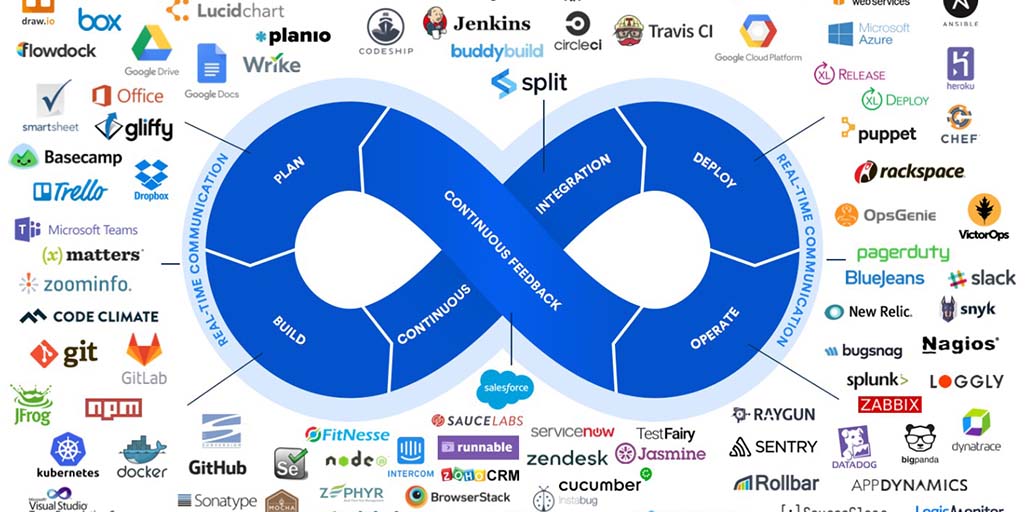Introduction to DevOps CI/CD:
DevOps CI/CD is a software development process that integrates Continuous Integration (CI) and Continuous Delivery (CD) in order to improve the quality, speed, and reliability of software. DevOps CI/CD is used by developers to automate the build and deploy process for their codebase. This helps to ensure that the code is always stable and reliable.
How to Implement CI/CD?
In order to effectively implement Continuous Integration and Continuous Delivery (CI/CD), it is essential to have a DevOps culture in place. A DevOps culture is characterized by collaboration between developers, QA, and operations. It involves automated testing and deployment of code into the production environment. The DevOps Training in Hyderabad course by Kelly Technologies can help you leverage skills need to achieve continuous integration and continuous delivery with DevOps.
There are a number of tools that can be used in conjunction with CI/CD, including source control management (SCM) systems, build automation tools, and test automation frameworks. Pipeline as code enables developers to write scripts that automate the entire pipeline from development to deployment. This makes it easy for them to ensure that each step of the process is executed correctly.
In order to successfully implement CI/CD, it is important to have a clear understanding of the various tools and processes that are available. Additionally, it is necessary to establish guidelines for how code will be tested and deployed. There are a number of different pipeline as code frameworks that can help developers automate testing and deployment. These frameworks make it easy for developers to write scripts that automatically execute all the necessary tests and deploy the code into production.
The DevOps Pipeline
The DevOps Pipeline is a framework that has been developed to help businesses manage their software development and IT operations. The pipeline consists of four stages: planning, building, testing, and deploying. In this section, we will provide an overview of each stage of the pipeline and explain how it can be helpful in managing your software development process. Planning is the first stage of the pipeline and involves identifying what needs to be done and developing a plan for doing it. This includes determining what tools and resources are needed, as well as figuring out how these resources will be used.
Building is the second stage of the pipeline and involves creating the actual software using the planned resources. This stage can involve both manual tasks (such as coding) as well as automated tasks (such as compilation). Testing is also a part of building in the DevOps Pipeline. It involves making sure that the created software meets all requirements before it is deployed to users or customers. Finally, deploying refers to actually releasing the created software to users or customers. This Stage usually requires additional steps such as configuration management and monitoring.
Orchestration In The Pipeline
Jenkins, Maven, Artifactory, and Nexus are all commonly used in the automation of software development. In this section, we’ll go over what they are and how they can be used to orchestrate your pipeline.
Jenkins is an open source automation server that enables you to automate the execution of build processes and other tasks across multiple machines. This can be incredibly useful when it comes to automating repetitive tasks or building out a continuous integration (CI) pipeline.
Maven is a Java project management tool that enables you to manage dependencies and resolve conflicts between projects. This is important because it allows you to ensure that all the code that goes into your projects is up-to-date and correct. Maven also has features for managing builds and reporting on project status.
Artifactory is a binary repository manager that helps you to store files such as binaries, source code, images, etc. It can also be used for managing versions of these files so that you can easily track changes over time. Finally, Artifactory also has features for deploying applications onto cloud platforms such as Amazon Web Services (AWS).
Nexus is a repository manager that helps you to manage repositories of different types – local repositories (for use within your organization), remote repositories (such as those hosted by GitHub or Bitbucket), and Git repos (used with version control systems like Git). Nexus also includes features for controlling access rights and monitoring repository activity.
Why Use A Pipeline?
The task at hand is complex, then it’s likely that you’ll need a pipeline. A pipeline is simply an automated system that helps to streamline and coordinate workflows. This can save you time and improve efficiencies in your workflow. Additionally, pipelines provide visibility into the progress of projects, which can help to ensure quality standards are met.
Pipelines can be extremely useful for a variety of tasks. For example, they can help to streamline the process of creating products or services. In this scenario, a pipeline might act as a platform for automating various steps in the production process. This could include things like coordinating between different teams and ensuring that all requirements are met.
Another common use for pipelines is in the field of automation. Many businesses now rely on automation to save time and increase productivity. A pipeline can help to automate many different tasks, including those that would traditionally require human input. This can make your workflow more efficient and allow you to focus on more important tasks.
Conclusion:
In conclusion, this article in the Article Marketer Pro must have given you clear idea of the DevOps landscape. The DevOps Pipeline is a system for automating the process of delivering software products. By breaking down the delivery pipeline into smaller, more manageable parts, organizations can speed up the delivery of new features and enhancements to their products.



